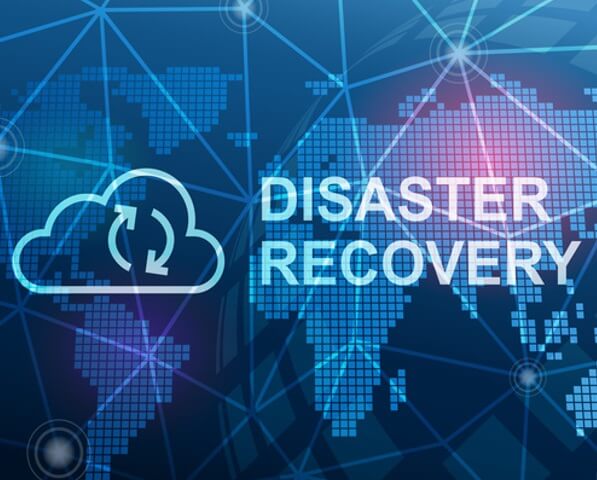
IT Disaster Recovery Planning Template For Ensuring Business Resilience

In today’s technology-driven landscape, businesses rely heavily on their IT infrastructure. From customer data to critical applications, the digital realm is the heartbeat of modern enterprises. However, with great reliance comes the potential for great vulnerability.
Disruptions such as cyberattacks, hardware failures, or natural disasters can cripple operations, leading to significant financial losses and reputational damage. This is where an IT disaster recovery planning template becomes invaluable.
IT Disaster Recovery Planning Template: A Closer Look
An IT disaster recovery planning template serves as a structured approach to mitigate risks and ensure business continuity in the face of adversity. It encompasses various strategies, policies, and procedures that enable an organisation to swiftly recover its IT systems and data. Let’s delve into the comprehensive outline of this crucial framework:
Understanding IT Disaster Recovery
An IT disaster recovery plan is a comprehensive strategy that outlines how an organisation will respond to unforeseen events that compromise its IT infrastructure. It goes beyond data restoration, encompassing all aspects of IT operations to ensure minimal downtime and data loss.
Significance for Modern Businesses
In an era where digital operations are the norm, a well-structured disaster recovery plan is no longer a luxury but a necessity. It shields businesses from financial losses, customer dissatisfaction, and legal repercussions that could arise from prolonged system outages.
Key Elements of a Robust Recovery Plan
A successful recovery plan hinges on several key elements:
Risk Assessment and Analysis
Identifying potential threats and vulnerabilities is the foundational step. From natural disasters to cyber threats, a comprehensive risk assessment guides subsequent planning.
Business Impact Analysis
Understanding the potential consequences of an IT failure on various business functions helps prioritise recovery efforts effectively.
Establishing Recovery Objectives
Defining Recovery Time Objectives (RTOs) and Recovery Point Objectives (RPOs) sets clear targets for restoration timelines and data loss tolerance.
Data Backup and Redundancy Strategies
Implementing regular data backups and redundancy measures ensures that critical information is available even in the event of a major disruption.
Systematic Data Recovery Procedures
Crafting detailed procedures for data recovery, including validation processes, guarantees accurate and efficient restoration.
Application Recovery
Prioritising the recovery of essential applications streamlines operations during a crisis.
Cloud Integration for Recovery
Leveraging cloud infrastructure provides scalability and remote accessibility during recovery.
Communication and Stakeholder Management
Open and transparent communication with stakeholders is pivotal during recovery. Keeping employees, customers, and partners informed fosters trust and understanding.
Training and Preparedness
Regular training drills and preparedness exercises ensure that the team is ready to execute the recovery plan efficiently when the need arises.
Testing the Disaster Recovery Plan
Conducting regular tests and simulations of various disaster scenarios helps identify weaknesses in the plan and fine-tune it for optimal performance.
Plan Maintenance and Updates
Adapting the plan to evolving technologies and risks ensures its relevance and effectiveness over time.
Role Assignments and Responsibilities
Clearly defining roles and responsibilities within the recovery team minimises confusion and enhances the plan’s execution.
Budgeting for Disaster Recovery
Allocating appropriate resources and budget to disaster recovery initiatives underscores the organisation’s commitment to resilience.
Vendor and Supplier Considerations
Coordinating with vendors and suppliers ensures that external dependencies are accounted for in the recovery process.
Legal and Regulatory Compliance
Adhering to legal and regulatory requirements safeguards the organisation from potential legal complications during recovery.
Documenting the Recovery Plan
Maintaining comprehensive documentation of the recovery plan aids in its accessibility and understanding for all involved parties.
Remote Work Contingencies
Incorporating strategies for remote work enables the continuation of critical operations even in situations that prevent on-site access.
Cybersecurity Measures
Integrating robust cybersecurity measures within the recovery plan helps prevent and mitigate potential security breaches during recovery.
Handling Customer and Public Relations
Effective communication with customers and the public preserves the organisation’s reputation and minimises negative perceptions.
Learning from Previous Incidents
Analysing past incidents and near-misses provides valuable insights for refining the recovery plan and enhancing future responses.
Employee Awareness and Involvement
Involving employees in the recovery planning process fosters a sense of ownership and ensures a more coordinated execution.
Continuous Improvement Strategies
Regularly reviewing and updating the recovery plan based on lessons learned and emerging threats enhances its overall efficacy.
Frequently Asked Questions

How often should a disaster recovery plan be tested?
Regular testing is crucial. An annual testing frequency is a good starting point, but high-risk industries may require more frequent tests.
Are third-party services advisable for disaster recovery?
Yes, outsourcing recovery services can provide expertise and resources that internal teams may lack.
Can a disaster recovery plan prevent all IT disruptions?
While it can’t prevent every disruption, a well-developed plan significantly reduces downtime and damage.
How does a disaster recovery plan align with cybersecurity?
A disaster recovery plan and cybersecurity measures complement each other. The plan addresses recovery post-breach, while cybersecurity focuses on prevention.
Is employee training necessary for plan effectiveness?
Absolutely. Employees should be well-versed in the plan’s execution to ensure a smooth response.
What metrics should be used to measure the plan’s success?
Metrics like Recovery Time Objective achievement, data loss prevention, and adherence to recovery procedures offer valuable insights.
In an ever-evolving digital landscape, an IT disaster recovery planning template stands as a shield against operational disruptions. By comprehensively addressing risks, recovery strategies, and ongoing improvements, businesses can fortify their IT infrastructure, ensuring a resilient and steadfast operation even in the face of adversity.
You may also like to know more about
- IT Disaster Recovery Planning Process for Ensuring Business Continuity.
- Disaster Recovery Plan For Ensuring Business Continuity in Challenging Times.
- Business Continuity Planning vs Disaster Recovery Planning.
- Step by Step Guide for a business continuity plan.
- What is Business Continuity Planning? Importance, Risk Assessment, & Core Objectives.
- Understanding the Disaster Recovery Planning – steps, benefits and best practices.
- Disaster Recovery Planning To Ensure The Connectivity in Crisis.
Stay connected with EXCEED ICT
Stay connected with EXCEED ICT by joining our social networks (given at footer). Get the latest updates, news, and tips for enterprise device deployment. Follow us on Twitter, Facebook, and LinkedIn for the best enterprise device deployment solutions.
Help us to improve our enterprise by rating us on Google Maps. Your feedback and comments are valuable to us and will be used to make our services even better.


